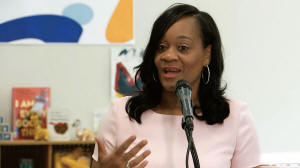|
State Sen. Kimberly Lightford, D-Maywood, has introduced Senate
Bill 13, an adequacy-based funding formula for public
universities similar to Illinois’ evidence-based K-12 funding
model that was adopted in 2017.
The plan calls for adding nearly $2 billion in new funding over
the next decade, but distributing the funds under a formula that
would give priority to schools that are currently the least
adequately funded, disregarding their academic outcomes.
“Despite education’s paramount importance, the disparity in
funding among higher educational institutions remains dreadfully
evident,” said Lightford. “This imbalance not only undermines
the principle of equal opportunity but also hampers our
collective progress as a society.”
Lightford is part of the Commission on Equitable Public
University Funding. The 30-person commission studied if public
institutions of higher education are in need of a new funding
model when serving underrepresented and historically underserved
student groups, including Black and brown students, as well as
students from low-income families.
Nick Jones, vice president of academic affairs for the
University of Illinois System, said a tiered, mission-aligned
approach to funding would be more ideal.
“This approach would ensure that funding supports student
outcomes, holds institutions accountable for results and drives
true equitable distribution of the state’s investment in higher
education," said Jones.
He noted that under the proposed formula, the U of I System
would receive less than 30% of any new funding provided in the
first year of the program.
State Rep. C.D. Davidsmeyer, R-Murrayville, said the government
keeps pumping more money into Illinois’ K-12 schools and the
results aren’t there.
“Until we make higher education, college education, affordable
for students throughout the state of Illinois, we shouldn’t be
giving them any more money,” said Davidsmeyer. “We have to
figure out how to get that tuition down and how to get Illinois
students into Illinois schools.”
|
|




